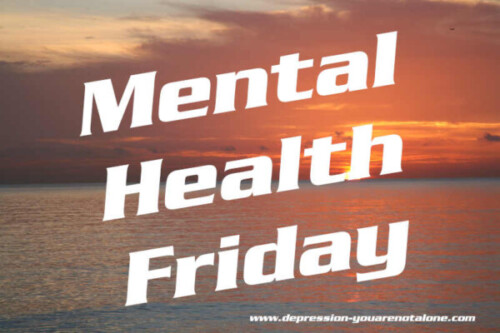Mental Health Friday 2023-10-06
On Mental Health Friday, we post, in alphabetical order, one per week, information on mental health disorders. Mental Health Friday is for informational purposes only, and is in no way meant to diagnose, treat or cure any disease. Please do not self diagnose and seek professional help for what ails you.
Link: FindTreatment.gov is an online source of information for persons seeking substance use and/or mental health treatment facilities in the United States or U.S. Territories.
.
Non-suicidal Self-injury
By Editorial Team
Non-suicidal self-injury (NSSI), sometimes referred to as self-harm or self-mutilation, is a complex and concerning behavior in which individuals intentionally harm their own bodies without the intent to die by suicide. NSSI is often a coping mechanism employed to deal with emotional pain, distress, or overwhelming negative emotions. This behavior can manifest in various forms, and it is essential to understand it in detail to better address the needs of those who engage in NSSI. Here, we will discuss and describe NSSI in detail, including its prevalence, causes, methods, and potential treatments.
- Prevalence: NSSI is not uncommon, particularly among adolescents and young adults. According to research, approximately 15-20% of adolescents have engaged in NSSI at least once, with the behavior often starting during the teenage years. However, NSSI is not limited to any age group, as it can affect individuals of all ages.
- Methods: NSSI can take many forms, and the methods used may vary from one person to another. Some common methods include:
- Cutting: The use of sharp objects to create cuts or scratches on the skin.
- Burning: The application of heat, such as with a lighter or hot object, to the skin.
- Hitting or punching: Striking oneself to cause pain or injury.
- Biting: Biting one’s own skin.
- Hair-pulling: Pulling out one’s hair, eyelashes, or eyebrows.
- Interference with wound healing: Reopening or worsening existing wounds.
- Ingesting harmful substances: Swallowing harmful substances, although this is less common.
- Causes and Triggers: NSSI is often a way for individuals to cope with overwhelming emotional distress or negative feelings. Common triggers include:
- Emotional pain: Such as depression, anxiety, anger, loneliness, or guilt.
- Difficulty expressing emotions: Some individuals may find it challenging to articulate or communicate their feelings verbally.
- Negative body image: Discomfort with one’s own body or appearance.
- Impulsivity: NSSI can sometimes be impulsive rather than premeditated.
- Peer pressure: Some individuals may engage in NSSI due to peer influence.
- Psychological Aspects: Individuals who engage in NSSI often report a temporary sense of relief or release from emotional pain following the act. This temporary relief can create a cycle of dependency on NSSI as a coping mechanism. However, the behavior does not address the underlying emotional issues and can lead to guilt, shame, and physical harm.
- Treatment and Intervention: Addressing NSSI typically involves a multidimensional approach that may include:
- Therapy: Cognitive-behavioral therapy (CBT), dialectical behavior therapy (DBT), or other evidence-based therapies can help individuals identify and develop healthier coping mechanisms.
- Medication: In some cases, medication may be prescribed to treat underlying mental health conditions contributing to NSSI, such as depression or anxiety.
- Support systems: Building a strong support network, including friends, family, and mental health professionals, can be crucial.
- Education and awareness: Raising awareness about NSSI and reducing stigma can encourage individuals to seek help.
- Long-Term Outlook: Recovery from NSSI is possible with appropriate treatment and support. Many individuals who engage in NSSI can learn healthier ways to cope with their emotions and reduce or cease the behavior over time. However, it may be a challenging process, and relapses can occur.
In conclusion, non-suicidal self-injury is a complex behavior that involves intentionally harming one’s body as a way to cope with emotional pain or distress. Understanding the underlying causes and providing appropriate treatment and support are crucial steps in helping individuals who engage in NSSI find healthier ways to manage their emotions and improve their overall well-being. If you or someone you know is struggling with NSSI, it is essential to seek professional help from a mental health provider.

